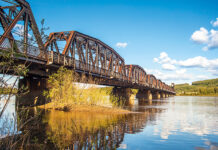As communities across Canada work to integrate new technology and innovation to transform existing communities to smart cities, the world is watching as the process of creating Toronto’s Quayside unfolds.
Industry leaders from across Canada gathered at the Toronto Region Board of Trade’s third annual Smart Cities Summit, where community representatives from coast-to-coast, and well as from multiple global markets, discussed the solutions they are working towards in the creation of smart cities. This included presentations from several finalists in the Canadian Smart Cities Challenge, as well as keynote presentations from international markets and industry leaders.
It also included a panel discussion focused solely on the development of the Quayside project, the smart city project being developed by Sidewalk Labs in partnership with Waterfront Toronto. According to Meg Davis, chief financial officer for Waterfront Toronto, it was Sidewalk’s proposal that was most in line with the vision her and her team had set out for the waterfront lands. That vision involved solutions to address three primary challenges: sustainability, resiliency, and urban innovation; complete communities; and economic development and prosperity.
The project has afforded Sidewalk Labs with the ability those challenges, and become a test bed for new technology and innovation to do so. According to John Broadhead, director of policy and strategy at Sidewalk Labs, the 12-acre side affords the right scale to test new technologies.
Stephen Beatty, global chairman of KPMG Infrastructure and moderator of the Quayside session at the summit, agreed that the scale of Quayside is sensible, and that it will be the engagement that will be key in determining the ability to scale up the model for a larger population.
“If it works for 50,000 people, will it work for 500,000? That’s the job of the next generation of planners to figure that out,” Beatty explained. “The interesting challenge we have is that we’ve got the academic community engaging this, and they will be able to watch it, watch it evolve over time, watch people interact with the infrastructure, watch people interact with the community. That’s going to be the key in unlocking the 500,000-person value.”
Among those observers is Shauna Brail, an associate professor at the University of Toronto. One of the most important developments she has observed as part of the Quayside project has been the greater emphasis on transparency that Sidewalk Labs has provided throughout the process of developing the project. It’s a new type of engagement model, one not seen in the development of community infrastructure, one where both the developer and the community are trying to determine the way forward without a concrete plan previously put in place before the process has begun.
“What’s interesting is you see the discomfort with dealing with a working process that the communities at large are dealing with,” Beatty said. Once it’s on the street, you can’t change it. And part of the issue here is actually having iterative change.”
A key component of the development has been the work towards developing a climate positive neighbourhood that is greenhouse gas negative. Concepts like tall timber, the scale of which has yet to be erected in Canada, can contribute to ability to meet that goal, along with effective systems for recycling waste heat, generating renewable power, and minimizing waste.
The solutions for reaching a climate positive neighbourhood do exist, as other international jurisdictions have proven, but can they fit in Toronto. Beatty suggests that’s an important question that must be considered.
“The contextual information, the cultural information, the specific context of Toronto needs to be factored into everything. The art is to translate something that looks like a really good idea and making sure it works in Toronto. Making sure it works in a four-season climate environment. Making sure it works on a waterfront. Making sure all of these things are addressed.”
With a full proposal to be submitted by Sidewalk Labs in early 2019, and a continued commitment to community engagement, there will be plenty of opportunity to better understand if the Toronto context is being embraced.
















